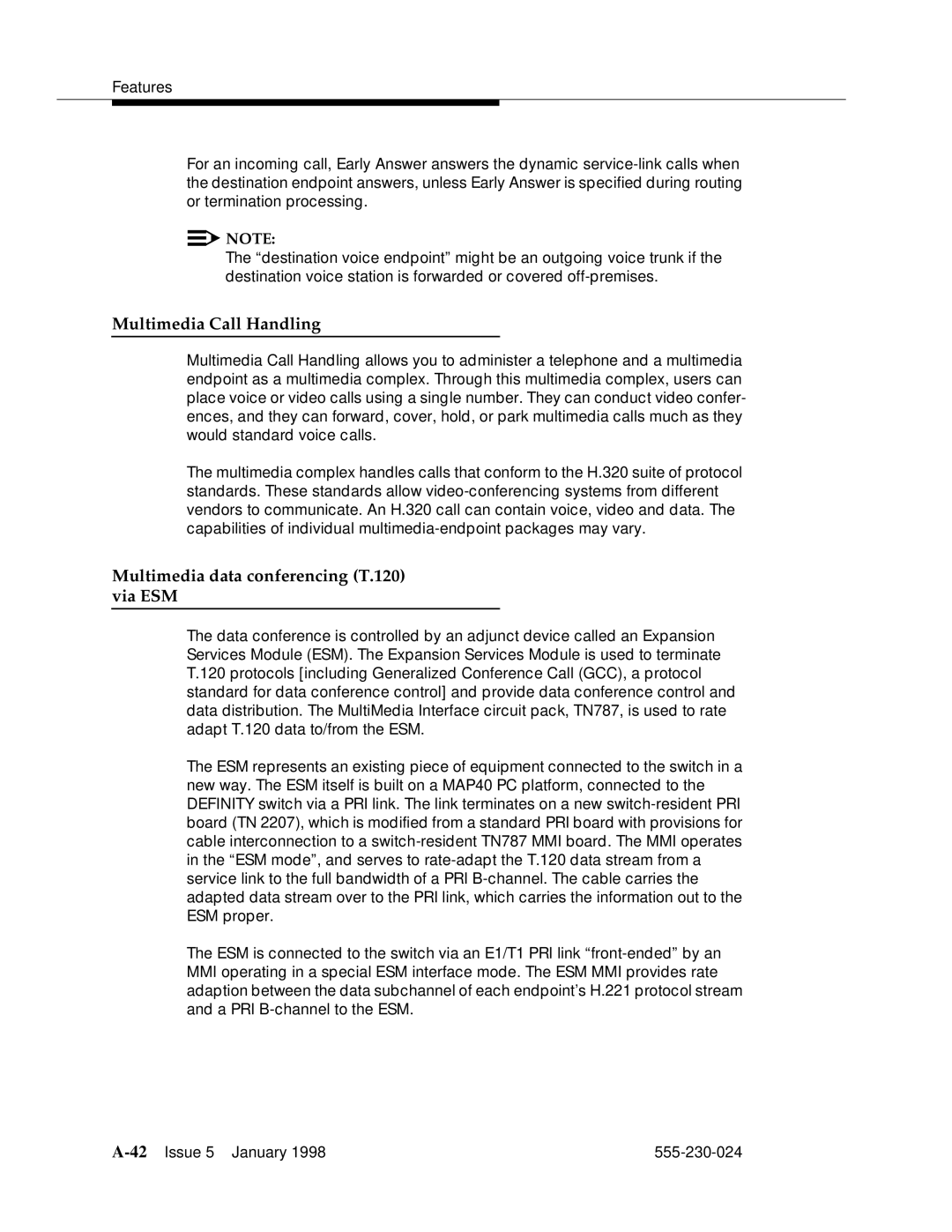
Features
For an incoming call, Early Answer answers the dynamic
![]()
![]() NOTE:
NOTE:
The “destination voice endpoint” might be an outgoing voice trunk if the destination voice station is forwarded or covered
Multimedia Call Handling
Multimedia Call Handling allows you to administer a telephone and a multimedia endpoint as a multimedia complex. Through this multimedia complex, users can place voice or video calls using a single number. They can conduct video confer- ences, and they can forward, cover, hold, or park multimedia calls much as they would standard voice calls.
The multimedia complex handles calls that conform to the H.320 suite of protocol standards. These standards allow
Multimedia data conferencing (T.120) via ESM
The data conference is controlled by an adjunct device called an Expansion Services Module (ESM). The Expansion Services Module is used to terminate T.120 protocols [including Generalized Conference Call (GCC), a protocol standard for data conference control] and provide data conference control and data distribution. The MultiMedia Interface circuit pack, TN787, is used to rate adapt T.120 data to/from the ESM.
The ESM represents an existing piece of equipment connected to the switch in a new way. The ESM itself is built on a MAP40 PC platform, connected to the DEFINITY switch via a PRI link. The link terminates on a new
The ESM is connected to the switch via an E1/T1 PRI link
